Exhibits
Embodied Pacific: Ocean Unseen
Embodied Pacific
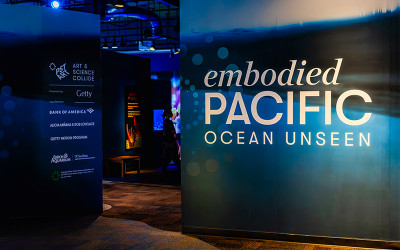
Embodied Pacific features projects by thirty artists working with researchers in laboratories, field sites, and archives in SoCal and the Pacific Islands. This partnership between UC San Diego Visual Arts and Birch Aquarium at Scripps Institution of Oceanography at UC San Diego invites immersive engagement in oceanography, Indigenous design, and critical craft through exhibitions, workshops, and programs at six venues.
Embodied Pacific is among more than 70 exhibitions and programs presented as part of PST Art. PST ART: Art & Science Collide is a landmark regional event that explores the intersections of art and science, both past and present. PST ART is presented by Getty. For more information about PST ART: Art & Science Collide, please visit pst.art
Seeing the Unseen at Birch Aquarium
Embodied Pacific: Ocean Unseen invites you to explore Scripps Institution of Oceanography and Indigenous science through the eyes of contemporary artists. These installations offer guests the chance to engage in scientific exploration through immersive, interactive experiences. Collectively, the exhibition asks us to consider how ocean science technology is not just about “high-tech” but also very much about the tools we use to shape our understanding of the ocean’s unseen mysteries. Eighteen artists across 10 projects come together in one immersive exhibition.
Archiving an Aquarium
Hans Baumann and James Nisbet + Birch Aquarium
Birch Aquarium uses technology to pump, filter and adjust seawater for its animals, simulating a real ocean experience. In this installation, artists Hans Baumann and James Nisbet explore how this technology shapes our understanding of ocean ecologies. Using archival footage and blueprints from the 1992 Hall of Fishes they create a “virtual aquarium” that highlights the evolution of the aquarium's efforts to bring the ocean to the public.
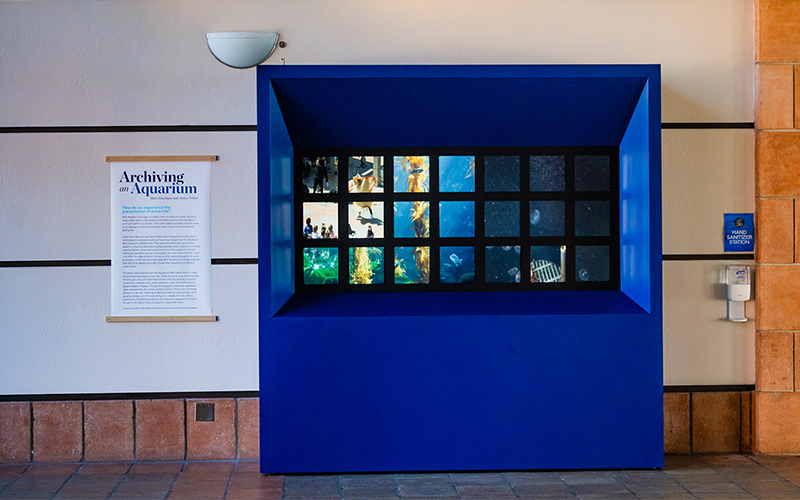
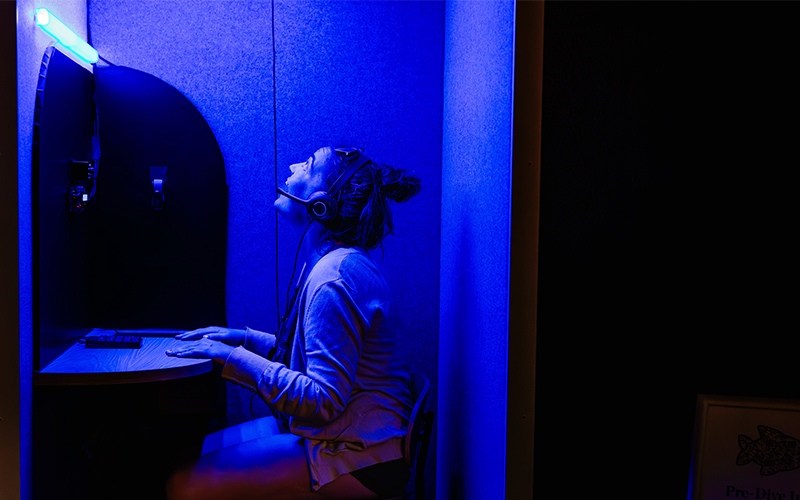
Fish Phone Booth
Ash Eliza Smith & Robert Twomey
Ash Eliza Smith and Robert Twomey create an interactive audio and sensory media experience where storytelling meets a guided sound bath. This project brings research from ocean acoustics and the internet of animals to life, translating data from outside the limits of human perception into bodily and sonic experiences. This project was prototyped in collaboration with La Jolla Playhouse’s WOW Festival.
Kumeyaay Ha Kwaiyo
Stan Rodriguez with Priscilla Ortiz, Andrew Pittman and Nan Renner
In the Ha Kwaiyo installation, a mid-size tule boat (by Priscilla Ortiz) hangs above guests, as if floating on the ocean surface. A nearby film by Andrew James Pittman tells the behind-the-scenes story of how boatmaking embodies Indigenous resilience, resistance and revival.
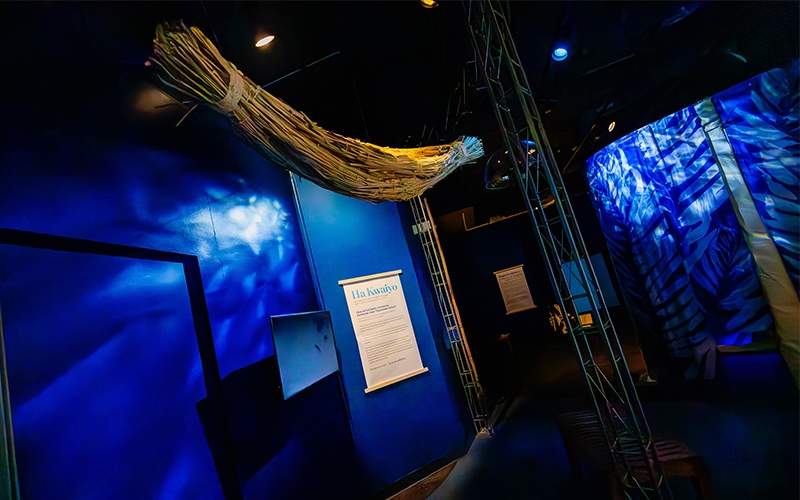
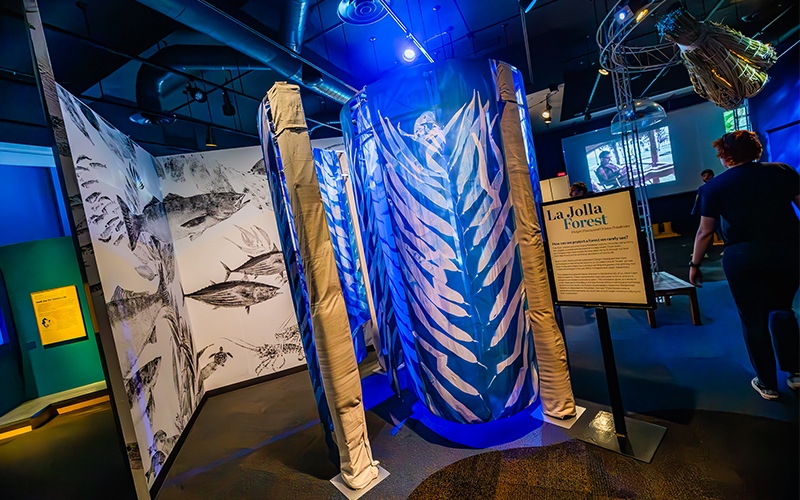
La Jolla Forest
Dwight Hwang and Oriana Poindexter + Mohammad Sedarat of the Smith Laboratory
La Jolla Forest is an immersive artwork created by Oriana Poindexter and Dwight Hwang to highlight both the beauty and the fragility of Giant Kelp. The installation draws attention to the biodiversity of La Jolla’s marine ecosystems by blending their expertise in cyanotype creation and traditional Japanese Gyotaku fish printing.
Mosaic Ocean
Judit Hersko + Jaffe Laboratory
In Mosaic Ocean, Judit Hersko explores the diversity of zooplankton by blending traditional and cutting-edge technology. In this installation, guests view images of plankton through the portals of multiple stereographic lenses, a plankton-observation methodology developed by Scripps Oceanography researcher Jules Jaffe.
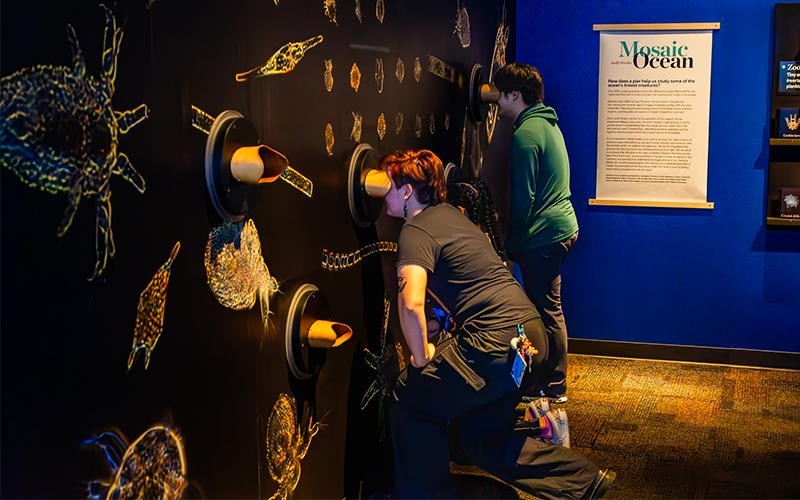

Our Worlds
Catherine Eng and Kilma Lattin
Our Worlds is an immersive storytelling application by Catherine Eng and Kilma Lattin that uses augmented reality technology to overlay interactive Indigenous narratives onto real-world locations. Through this app, guests will unlock stories, videos and 3D models of tule boats and Kumeyaay oceangoing stories, narrated by Embodied Pacific artist and educator Stan Rodriguez.
Passengers of Change
Danielle McHaskell, Joe Riley and Audrey Snyder + the Smith Laboratory
An invasive species can act as both a “driver” and a “passenger” in ecosystems. In this collaboration with marine ecologist Danielle McHaskell, the artists investigate whether global shipping has turned the algae Wakame into a major invasive species. Guests will explore how human trade affects marine ecosystems and reflect on our role in this process.
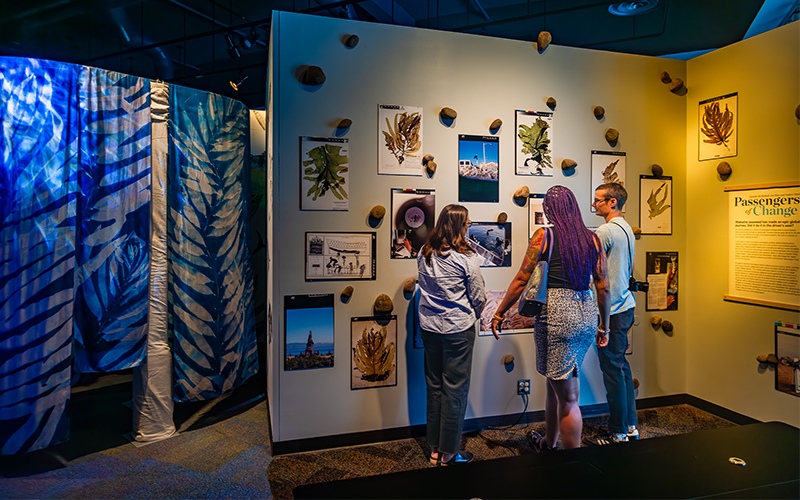
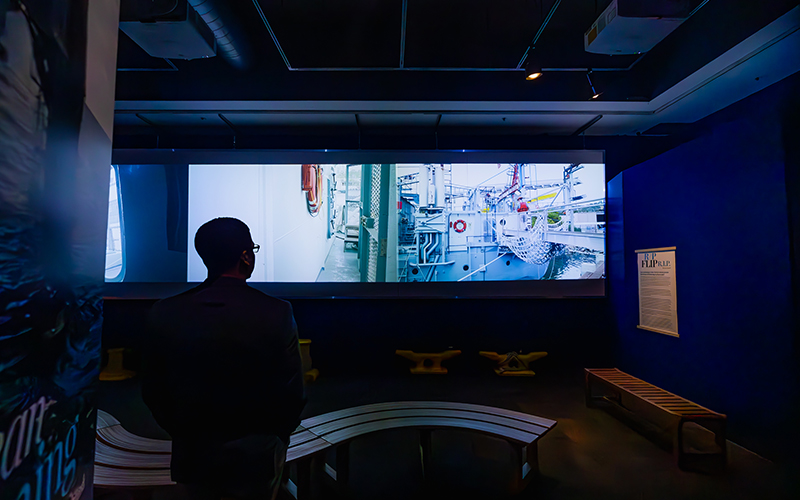
R/P FLIP R.I.P
Rachel Mayeri + FLIP
The FLoating Instrument Platform (FLIP) debuted in 1963 as a first-of-its-kind strategy for understanding ocean water columns. To shed light on FLIP’s second act as a marine acoustics platform, Rachel Mayeri – in collaboration with humanities scholars Deborah Forster and David Serlin and Scripps staff – produced a large-scale triptych video artwork to take us inside the recently decommissioned vessel through new and archival footage.
Superradiance. Embodying Earth.
Memo Akten and Katie Peyton Hofstader + SOARS
Superradiance. Embodying Earth. is a data dramatization of complex ocean simulations, distilled and re-imagined in the form of abstract visuals and sounds inspired by the Scripps Ocean Atmosphere Research Simulator (SOARS). SOARS is a 120-foot-long wave tank researchers use to replicate and study air and sea interactions under controlled laboratory conditions.
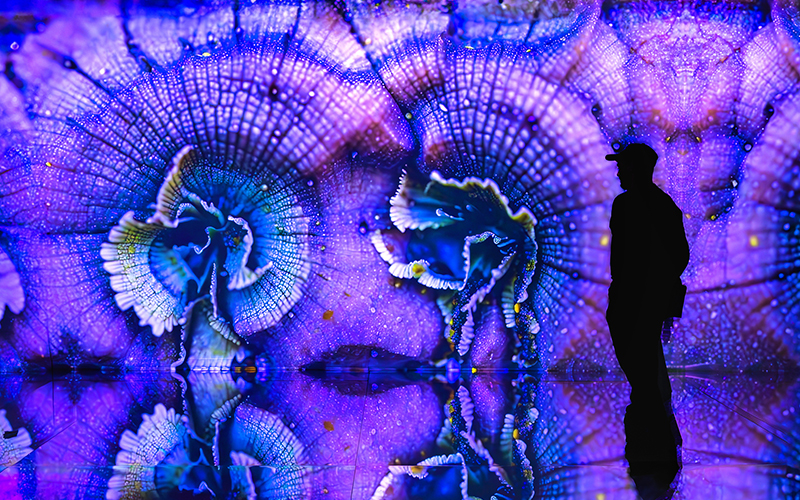
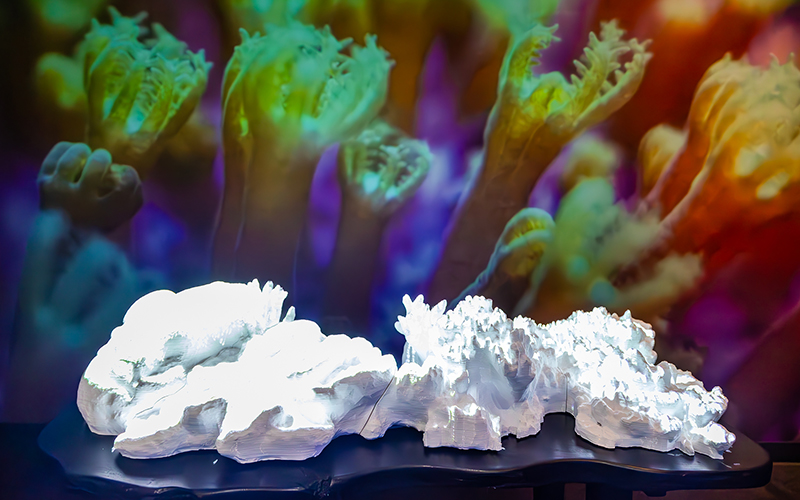
Unbleached
Scott McAvoy + Sandin and Smith Laboratories
Unbleached was created in collaboration with the Sandin and Smith Labs, archaeologist Dominique Rissolo and the 100 Island Challenge: a Scripps Oceanography collaboration which involves the digitization and visualization of key coral reef environments over time.
SCUBA Under the Blue Line
Emily Nixon, Scripps Oceanography PhD Candidate
What if you could SCUBA dive without getting wet? Use virtual reality (VR) headsets to explore Scripps Oceanography research reefs in Hawaii and other tropical locations. Through this immersive technology, Scripps Institution of Oceanography PhD Candidate Emily Nixon’s project Under the Blue Line invites guests to explore a world they might not otherwise see, and discover some of the creatures that call our oceans home.
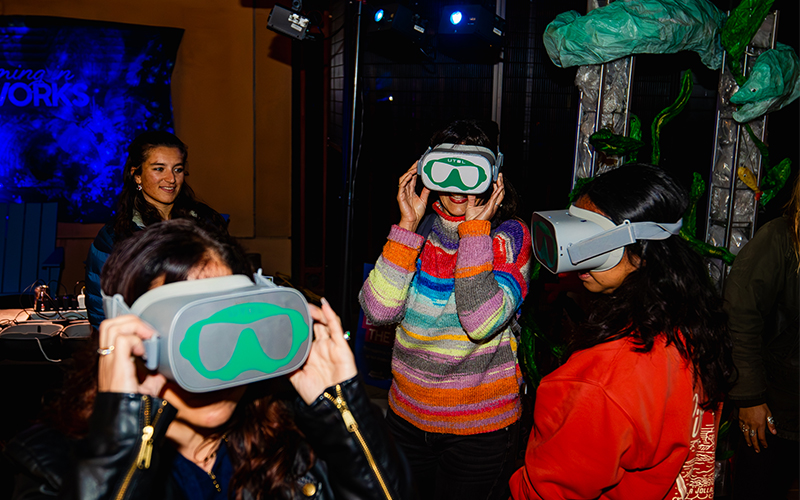
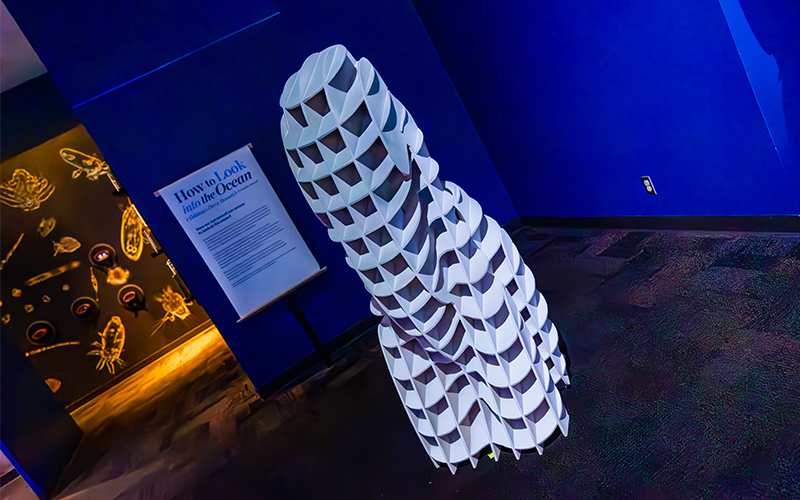
How to Look Into the Ocean
Please note, How to Look Into the Ocean was open in Embodied Pacific: Ocean Unseen from October 4, 2024 through March 10, 2025.
Claudine Arendt + Zooglider
Zooglider is an underwater robot created by Scripps Oceanography to study zooplankton in its natural habitat. Zooglider observes zooplankton optically through shadowgraph images and acoustically by sending soundwaves into the water and measuring the echo that is returned. Claudine Arendt’s human-sized sculptures, shaped by the acoustic fingerprints of key zooplankton species, create their own ecosystem—making the invisible visible, audible, and touchable.